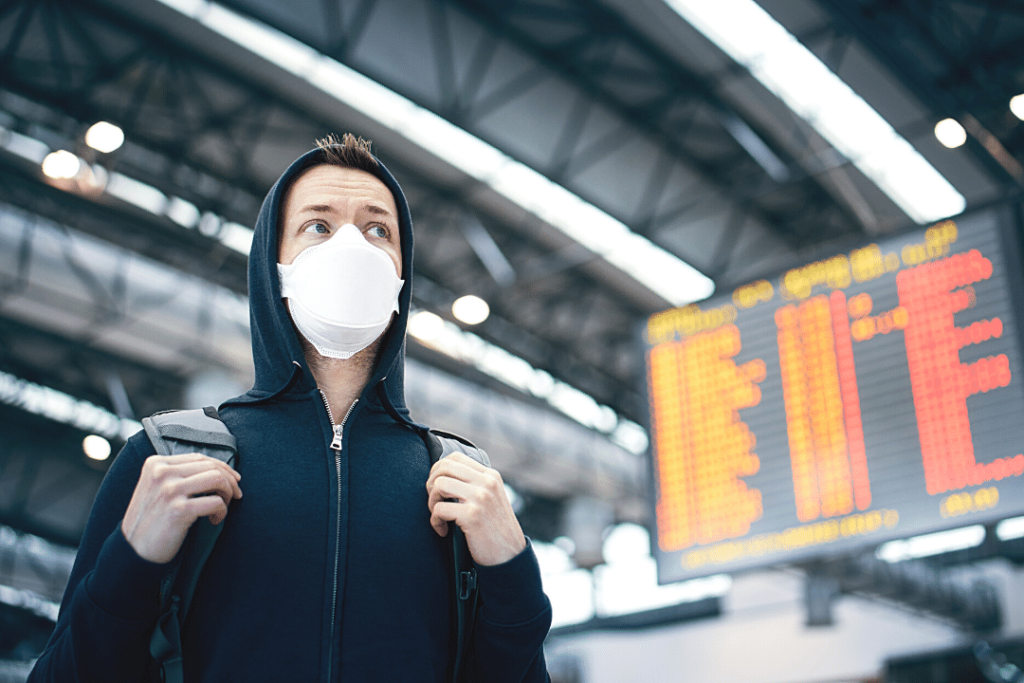The pandemic has led to global changes, and staying safe has become our #1 priority. Many things have changed, from the way we buy groceries to the way we exercise. Taking a flight has suddenly become a big decision to make. The question on everyone’s mind is: Should I take this flight? Is this vacation or trip worth it? Generally speaking, no one can make this decision for you. It is something that individuals have to weigh up on their own.
The good news is that airlines are doing their best to ensure safety for their crewmembers, as well as for the passengers. For example, there is plexiglass in almost all check-in areas, which can separate you from the crewmembers. Check-in itself is now contactless. Make sure to have your boarding pass ready on your phone. All you need to do now is scan your ID and check-in for the flight. Some terminal doors have thermal scanners installed, which checks the temperature of whoever is arriving. The planes are disinfected with special ultraviolet light and foggers.
The pandemic itself caused a significant decrease in passengers during the spring, so the airlines are doing what they can to make sure that people feel safe to travel again. A reduction of up to 95% of passengers has affected many airports and airlines. If you do choose to fly, you must know what precautions to take beforehand.
Most experts advise staying home as much as possible and avoiding any nonessential travel. However, many are now choosing to travel or are obligated to take a flight for one reason or another. There is a growing belief that the precautions made by the airlines, as well as the precautions that each passenger should take, are sufficient enough to reduce the risk when flying.
Staying Safe While Traveling
As the risk of catching the virus is higher when in contact with others, it is essential to do your best and distance yourself as much as possible from other people. If you are on an airplane, it might be hard to avoid contact with others. It is just as challenging to do so when on a train. Make sure to wear your mask at all times to protect yourself and others. Do your best to avoid touch surfaces. Some have even recommended counting the surfaces that you touch. Take note of the surfaces you are in contact with from when you arrive at the airport, up until you leave.
Take Handsanitizers And Wipes
Make sure to have a hand sanitizer with you on your carry-on bag and use it every time you touch a surface. Wash your hands often. Airlines disinfect the plane before a flight; however, there is no harm to double-check and sanitize areas such as bathroom doors, trays, armrests, etc. So, bring some sanitizing wipes with you. If your ID is handled by airport personnel, make sure you disinfect it afterward.
Choose Your Flight Wisely
Experts also believe that shorter flights are much better than longer ones. If you have the possibility, choose connecting lights, instead of direct ones. This will limit the time that you are possibly in contact with an infected person. It also means that you are much less likely to need to use the bathroom on a plane. You should also reduce the amount of contact with people in an aisle, which is why windows seats are better than aisle ones. All aircraft have filters, which can remove up to 99.9% of particles from the air. The turbulence from the filtered air can push the nonfiltered air away, so you should make sure to open the air vent.
Choose Your Airline Wisely
Select an airline carefully. It would be best if you chose airlines, where specific COVID-19 procedures are being taken. For example, some airlines use thermal scanners to monitor the temperatures of the passengers. Some airlines don’t allow a plane to be overbooked to ensure that there is enough room between the passengers. Your flight ticket could be more expensive, but if it is something that you can afford, it is recommended to do so rather than choose a cheaper, but more crowded flight.
There are also airlines with private terminals, meaning fewer people are waiting and, in some cases, the possibility that you can arrive just half an hour before your flight. Thus, decreasing your time in an airport and reducing the likelihood of being in contact with an infected person.
Final Thoughts And Tips
In conclusion, it is vital to note that no one can guarantee a safe flight. But, in an era of a pandemic, there is always a possibility of coming in contact with someone infected. If you choose to fly, do your best and take some of these precautions. Although some of them might seem small, they can make a significant change.
Here are some of the tips to follow:
- Pack a hand sanitizer in your carry-on and use it every time you touch surfaces.
- Wash your hands regularly. Use sanitizing wipes to disinfect areas before touching them.
- Keep a distance when in line, at the terminal, whenever possible.
- Plan extra time; choose connecting flights over direct ones, choose walking in the airport instead of taking the train/shuffle bus, etc.
- Turn up airflow when on the plane.
- Choose a window seat to limit interaction with passengers on an aisle.
- Choose the airline that you fly with carefully, make sure that they take all the possible COVID-19 precautions.
Remember that getting enough rest and hydration before, during, and after a flight will also make a big difference in the way your immune system reacts in case of coming in contact with the virus. By taking vitamin D, C, and zinc, you can reinforce your immune system. Also, inhaling essential oils can help.
Additional Reading:
